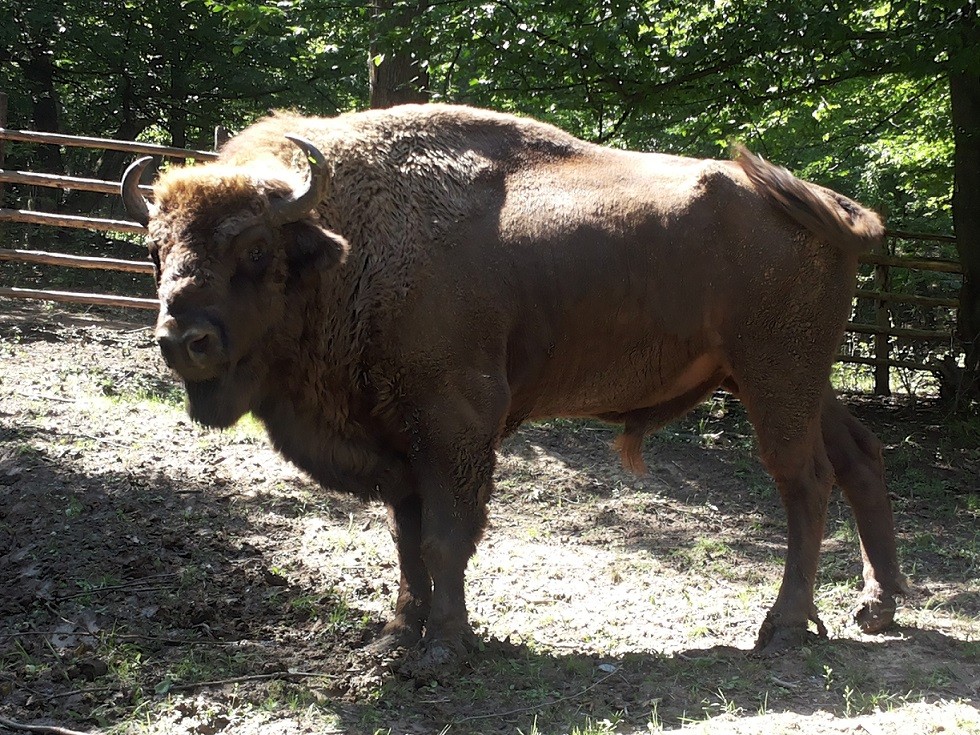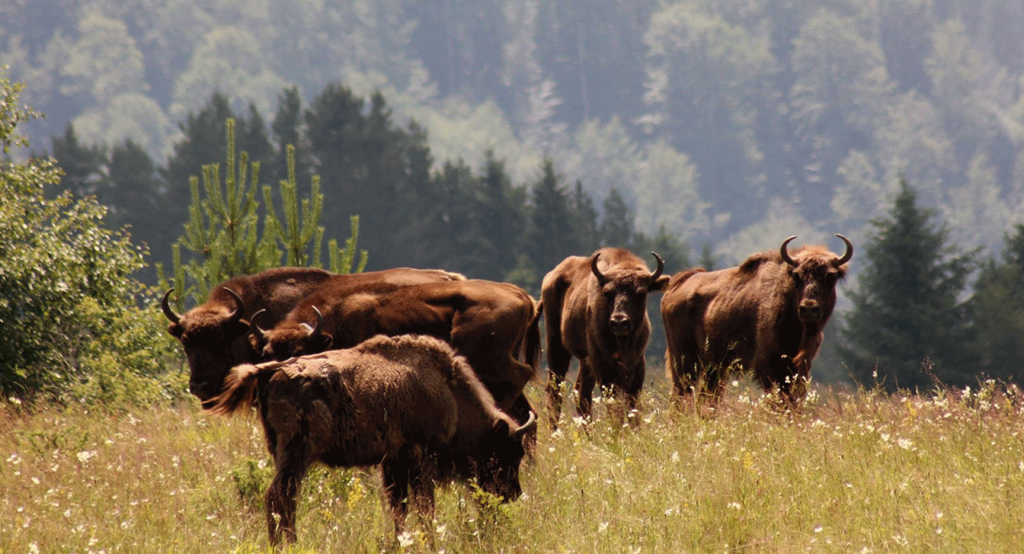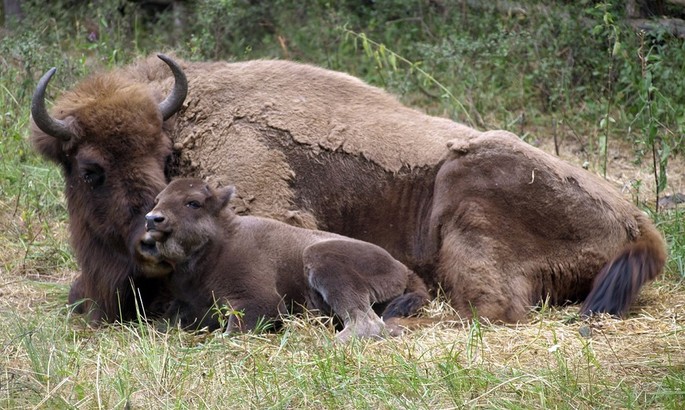Despite its solid appearance, actually the bison is an peaceful animal, friendly in the relations with the man, and tolerant with other animals, presenting rarely aggressive behavior.
The European bison, named Bison bonasus in literature in 1758 by Carl Linnaeus, is the largest land mammal that has survived in Europe. It is part of the family of bison, but unlike its American cousin, Bison bison, is higher but less massive, and with shorter fur. The European bison lives about 28 years in captivity, but lives less in a wild environment.
The massive deforestation, hunting and poaching have forced the largest mammal millennium to pay a heavy price, namely, its disappearance.
The bison, which has dominated for millennia Europe's forests, disappears from the local fauna from the Western Europe in the 11th century, while in Eastern Europe survived until the 18th century. His strong personality has won over the heart of the crowned heads of Eastern Europe, for which King Sigismund I of Poland in 1500 also established the death penalty for bison poaching. In 1927 it was killed last bison in freedom in the Caucasus, remaining only 50 bison in captivity.


The species was in grave danger.
The reintroduction of bison in the wild starts since 1951, being distributed in protected areas of Belarus and Poland, and in zoos in 30 countries. The species has reached a record number of 3,600 copies in 2000, but with a high degree of consanguinity due to the descent from only 12 specimens. This is why the current bison have a limited genetic diversity by presenting a high vulnerability to disease, pests and climate change.
The bison reappear in Romania in 1958, when a male and a female were brought from Poland to the Reserve of Bisons of Silva - Haţeg, Hunedoara County. In Romania, the bison can be also admired in the Reserve of Dragos Voda of Vânători Neamt, established in 1968, in the Black Reserve of Bucsani, Dambovita County, and in the Reserve the Valley of Bisons of Vama Buzăului, Braşov, inaugurated in November 2008.
Organizations like Rewilding Europe and WWF Romania, together with national and international collaborators are working to restore wild populations of bison in the wild in the Carpathians.
In 2014, 17 bison from different parts of Europe, were brought in the mountains of Tarcu, in the Southern Carpathians, and after a year, were successfully reintroduced in their natural habitat.
In June 2015, another 14 bison came to Armenis for a short period of acclimatization before being left in freedom. Until 2019, the area of the Southern Carpathians will live a stable population of 185 free bison, which could reach 500 bison over the next decade.
And since every important character has a big name, even bison Romania were given a stage name. The name of each bison starts with "RO" from Romania, for example, Romina, Romania, Rosina, Roco, Rococò, Roxi, Romo, ...
Sources and photos:
http://www.zimbrarianeagra.ro/zimbri.html
https://ro.wikipedia.org/wiki/Zimbru
ziuadevest.ro/actualitate/54080-o-noua-turma-de-zimbri-a-fost-adusa-in-zona-comunei-armenis
http://www.descopera-judetul-neamt.ro/rezervatia-de-zimbri-dragos-voda/





















